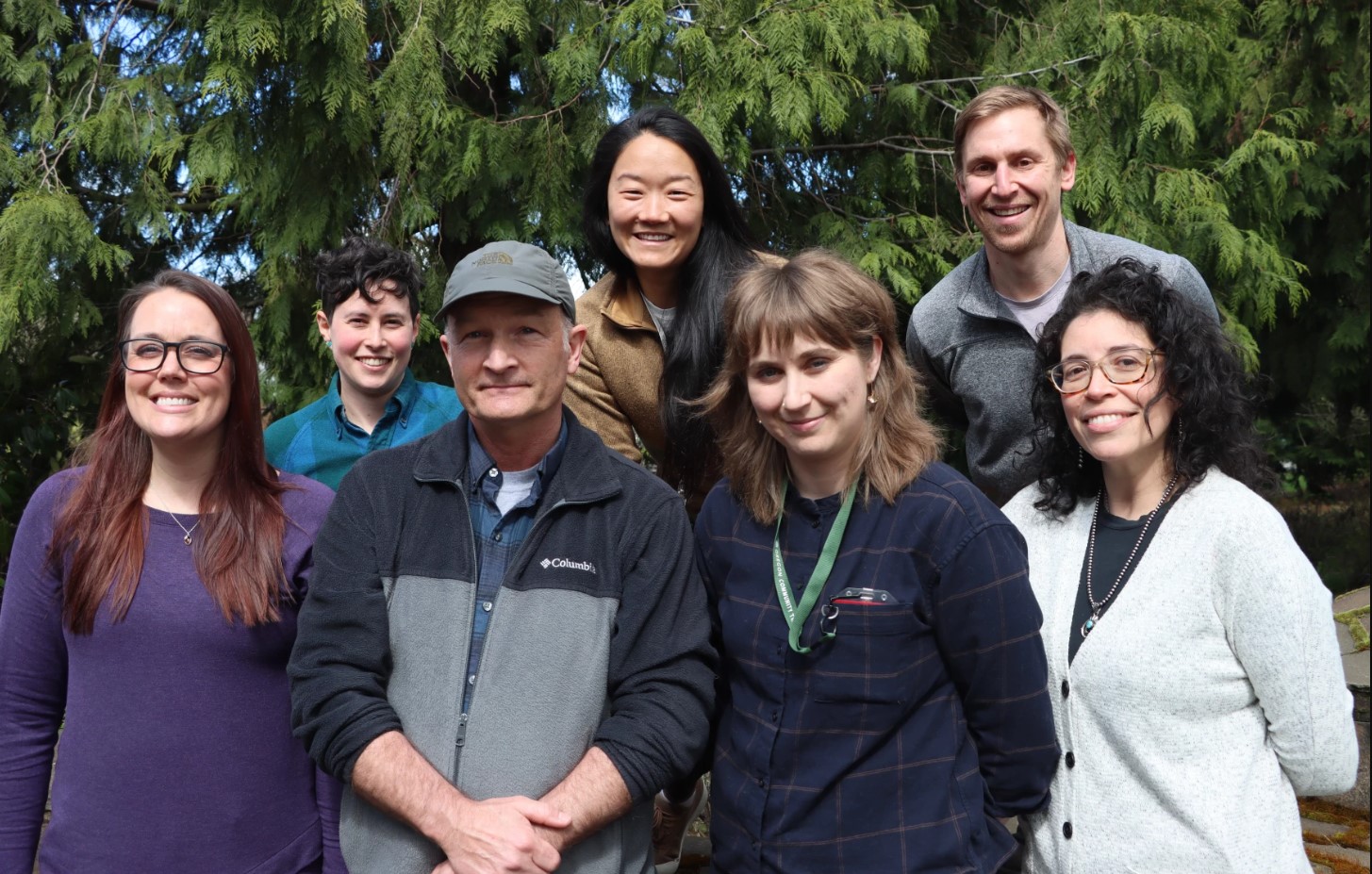
The staff of Oregon's Urban and Community Assistance Forestry Program. With new funding, the number of employees there has more than tripled.
Courtesy of the Oregon Department of Forestry
Oregon is expanding its support services for forests and trees in urban areas.
The Oregon Department of Forestry’s urban forest program advises cities as they manage and add to their tree canopies, while connecting them to technical resources.
“We help people think proactively,” said program manager Scott Altenhoff, “planting trees in the right spot, planting trees of the right species, preemptive pruning to prevent problems before they develop.”
However, this program previously had just two employees. According to Altenhoff, this meant the guidance they were able to provide was often cursory, and small communities were sometimes left out.
Related: Portland begins proactively pruning trees in public parks for the first time in its history
Altenhoff said investing in trees has widespread environmental, social and economic benefits. But he said it’s not without financial and safety risks that need to be mitigated.
“These are the trees and forests in our cities and surrounding our cities that have the most direct bearing on our well-being,” said Altenhoff, “and also sometimes provide threats to our well-being, in the case of wildfire or the recent ice storm.”
Now with new state and federal funding, the program has hired five more staff members. This includes a grant administrator and four community assistance foresters, with another two additions expected in the near future.
Related: As tree species face decline, ‘assisted migration’ gains popularity in Pacific Northwest
Altonhoff said among the new staff members, there is a strong understanding of environmental justice and as well as the danger that the emerald ash borer poses to the state’s trees.
He said this larger staff will be able to dive into the unique needs of cities across the state, while honing in on individual neighborhoods facing socio-economic challenges.
“A major focus will be to not just give these communities a fish, as it were, but to teach them how to fish,” said Altenhoff. “Rather than focusing just on individual projects, to help communities build enduring programs that can be self-sustaining over the long term.”
Moving forward, he said the program will focus on protecting trees from the threats of climate change and pests, as well as the pressures of urban development.
“With better tree canopy cover, there’s just a better community cohesion,” he said. “Trees have an uncanny ability to improve the way that people think, feel and behave.”

